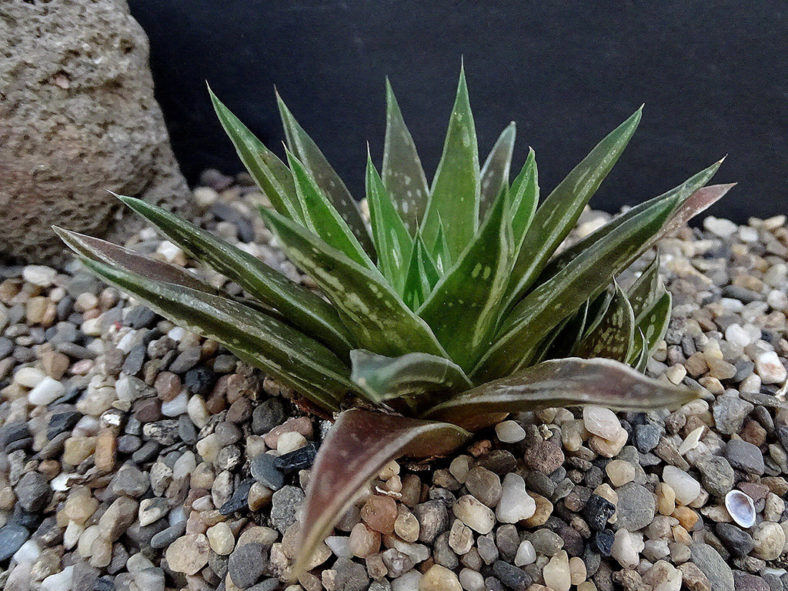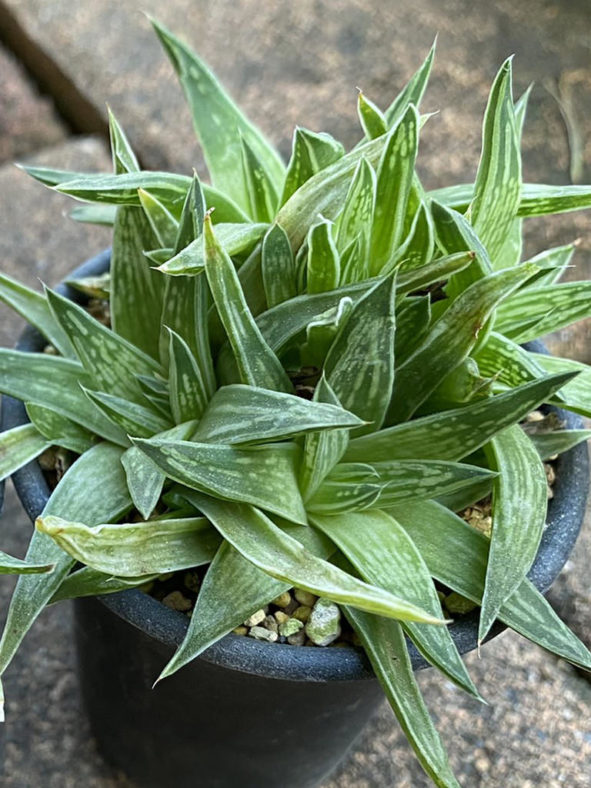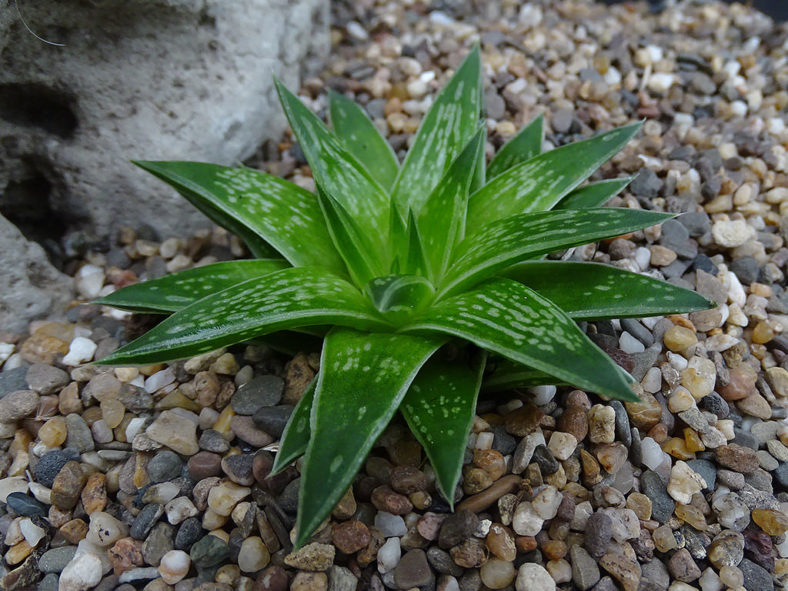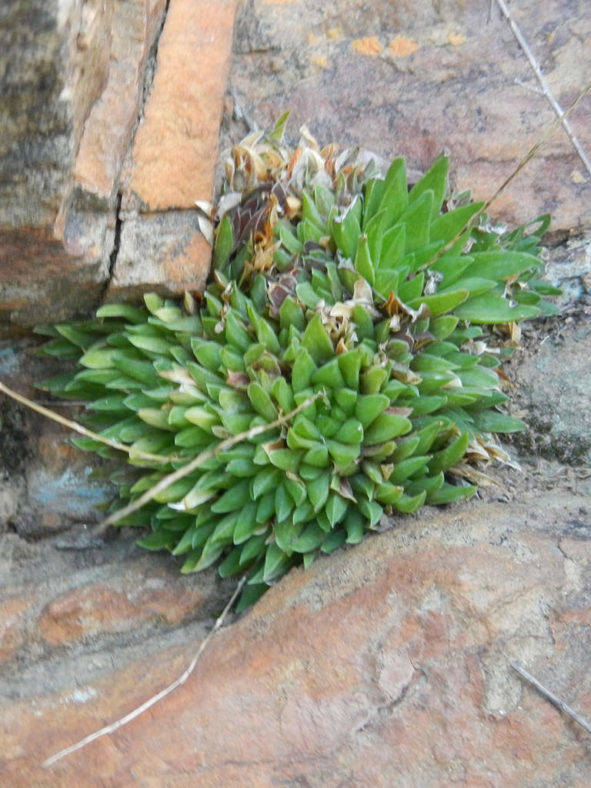Scientific Name
Haworthia zantneriana Poelln.
Common Name(s)
High Haworthia
Synonym(s)
Haworthia chloracantha var. zantneriana, Haworthia zantneriana var. zantneriana
Scientific Classification
Family: Asphodelaceae
Subfamily: Asphodeloideae
Tribe: Aloeae
Genus: Haworthia
Etymology
The specific epithet "zantneriana (zant-ner-ee-AH-nuh)" honors Major Alfred Zantner (1953-), a German succulent plant collector.
Origin
Haworthia zantneriana is native to South Africa (Eastern Cape and Western Cape). It is typically found on higher slopes, growing in rock crevices with little soil.
Description
Haworthia zantneriana is a small succulent that forms stemless rosettes of pale gay-green to brownish-green leaves, usually with white longitudinal markings and white keels and margins. The rosettes can reach up to 3.2 inches (8 cm) in diameter and offset freely, forming a dense clump. The leaves are thick, fleshy, and gradually narrowed from the base to the tip, measuring up to 2.8 inches (7 cm) long and 0.3 inches (0.8 cm) wide. The leaf tips are slightly recurved.
The white flowers have green or light brown veins and appear spirally arranged in racemes on slender stalks that can grow up to 10 inches (25 cm) long in spring.

How to Grow and Care for Haworthia zantneriana
Light: Place the potted plant in a bright area with some protection from the hottest rays of the day. White, yellow, or red-tinged leaves usually indicate that your H. zantneriana is receiving too much sunlight. Deep shade tends to weaken the plant over a prolonged period. If your plant has spent the winter indoors, gradually move it outdoors into the bright sun to prevent sunburn.
Soil: Like all Haworthias, this plant does not like its roots to remain wet for prolonged periods, so the soil should be well-drained. Use a commercial potting mix for succulents, or make your own.
Hardiness: This succulent likes warmer temperatures in the summer but cool in the winter. However, it does not like being too cold. H. zantneriana can withstand temperatures as low as 30 to 50 °F (-1.1 to 10 °C), USDA hardiness zones 10a to 11b.
Watering: In spring and fall, when the growth is most active, water H. zantneriana thoroughly, then wait until the top of the soil dries out before watering again. Water your plant less during the winter when its growth slows down significantly. When this plant is mostly dormant during the hottest summer months, water it just enough to keep the leaves from shriveling.
Fertilizing: H. zantneriana does not require much fertilizer. However, for optimum growth, fertilizing is a good idea. Feed only with a dilute fertilizer and only during the active growing season.
Repotting: This slow-growing succulent can stay in the same pot for years. To keep your plant healthy and happy, repot H. zantneriana into fresh soil every two to three years in spring or fall. Repotting time is also the time to take offsets for propagation.
Propagation: Vegetative propagation, especially by offsets, is the quickest and most common method of propagating H. zantneriana. This plant can also be propagated by leaves and seeds. Remove the offsets when they have started developing their own roots. Sow seeds in spring or fall in a well-draining soil mix.
Learn more at How to Grow and Care for Haworthia.
Toxicity of Haworthia zantneriana
H. zantneriana is considered non-toxic to humans and animals.
Links
- Back to genus Haworthia
- Succupedia: Browse succulents by Scientific Name, Common Name, Genus, Family, USDA Hardiness Zone, Origin, or cacti by Genus
Photo Gallery
Click on a photo to see a larger version.


